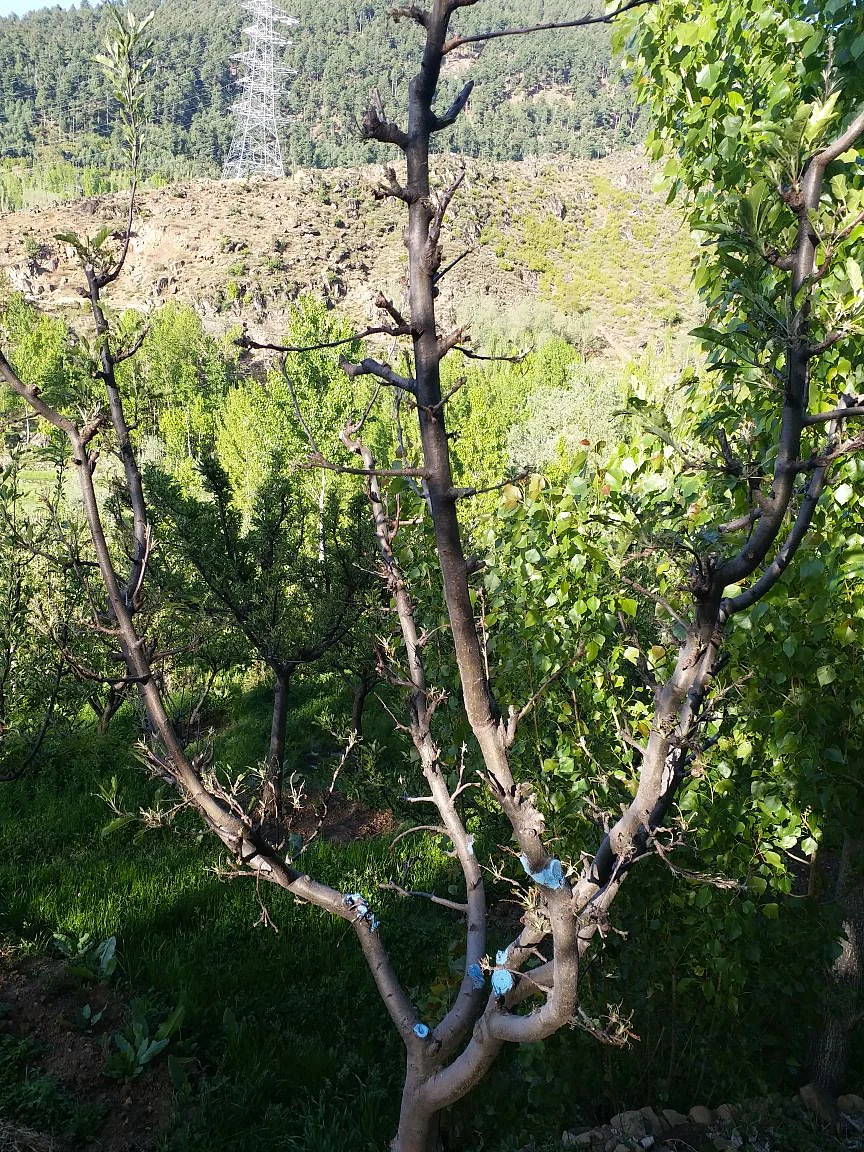J&K: NHPC’s ₹5,750-crore Kishanganga project develops leaks during trial
NHPC’s Kishanganga project in J&K, set to be inaugurated by the PM later this month, began leaking during its trial run and has been leaking for over two weeks, affecting apple orchards in the region

The National Hydroelectric Power Corporation’s ₹5,750-crore project on the Kishanganga river in Bandipora district of Jammu and Kashmir, which is set to be inaugurated by Prime Minister Narendra Modi later this month, began leaking during its trial run and has been leaking for over two weeks. Hindustan Construction Company and the UK-based Halcrow Group are jointly executing the project.
The leak has led to the seepage of water into the apple orchards nearby. The 15-km headrace tunnel (HRT), which is the main tunnel which carries water to the pressure shaft, has begun to leak and a survey was on to trace the exact status of the seepage. The HRT tunnel drains water from the dam in Gurez valley to the powerhouse set up in Bandipora.

Located on the river Kishanganga, a tributary of the Jhelum in Bandipora district, all the three units of the 340 MW project will generate 1,350 million units (MU) of clean electricity annually, said a statement from Bharat Heavy Electricals, which was entrusted to execute the project.
“All the testing was done,” said Khalid Umar, the chief engineer of the project. Acknowledging the problem, Umar said they were looking into the seepage after they received complaints from the villagers nearby. “When water begins to flow into the tunnel, the rocks around get affected, because there are a few joints in the rocks. So, water flowed to the land nearby. We have now stopped the water flow and grouted it again. We are checking if there are any more such seepages,” added Umar.
“But such things happen during the commissioning phase of the project. It will all be rectified before its inauguration in a few weeks for which Prime Minister Narendra Modi is expected,” pointed out Umar.
The chief engineer said that around 30-40 litres of water was seen gushing out from some of these seepage points. “We will compensate the families who have been affected,” says Umar.
“The HRT of the Kishanganga was for the first time constructed in India using the tunnel boring machine (TBM). There seems to have been some problems with the shotcrete (covering the walls of the tunnel with concrete) and the leaked waters are seeping out of the mountain on Bandipora side,” points out Shakil Ahmad Romshoo, who heads the department of Earth Sciences at the University of Kashmir.
“The seepage from the tunnel will damage the buildings due to the subsidence of the saturated soils. Further, the excessive moisture shall result in the die back of the fruit tree in the orchards. There are already a few newspaper reports detailing the damage to the built-up infrastructure and horticulture,” added Romshoo.
However, the seepage has affected the apple orchards, leading to wilting away of the first flowers during the flowering season.
For farmers like Mohammed Aazad in Kralpora in Bandipora, who has around 1 hectare land, this flowing water spells doom. There are around 20 orchardists in the area who depend on the fruit for their livelihood. Many in the region are worried if they will have to relocate once the project become fully functional.
“This is the flowering season. Just as the flowers came, this happened and they all wilted away. We won’t get enough apples from the orchards this year. It takes more than 20 years to build a sustainable apple orchard. On one side of the land, we had planted vegetables; all of it got submerged in the water. The water has now become a stream and if it continues, all the orchards in the region will die because it is not an aquatic plant,” said Aazad.
Watch: Water gushing out and flowing into the apple orchards
“An area of about 2.5 hectares has been affected by the seepage after the Kishanganga water project was partly operational. First, the NHPC chief engineer pointed out to Khurshid Sanai, the Deputy Commissioner-Bandipora, that the leakage could be from the irrigation canal running above the orchard areas. Even after those small leakages were plugged, the water would not stop gushing out from the fields,” said Manzoor Ahmad, the chief horticulture officer -Bandipora, who was asked to inspect the fields.
When the NHPC officers stopped the water from flowing into the HRT tunnel, water gushing out of come orchards reduce by 30% and in someby 70%, “but water still continues to gush out”, pointed out Ahmad.
The Deputy Commissioner said that a committee was constituted to look into the leakage and assess the damages and they have submitted the report. “Water is still gushing out and we are hopeful of arresting it soon. NHPC is looking at grouting and filling the canal again to avoid such leakages,” said Sanai.
“The tunnel needs to be repaired so as to plug the leakage, if any, and it should be inspected by a structural engineer and geologists so as to analyse the possibilities of leakage even before the dam is fully operational. The solution lies in plugging the tunnel water passage efficiently without haste so as to address the problem once for all,” adds Ahmad.
Adding to Ahmad’s observation is Romshoo, who says that, “The NHPC should immediately identify the stretches or points of the leak in the HRT and plug the same on priority so that the extent of damage to the built-up, fruit trees and other vegetation is minimised. There are state of art technologies that help us to identify the leakage so that these could be plugged by using appropriate non-leaking materials.”
Follow us on: Facebook, Twitter, Google News, Instagram
Join our official telegram channel (@nationalherald) and stay updated with the latest headlines